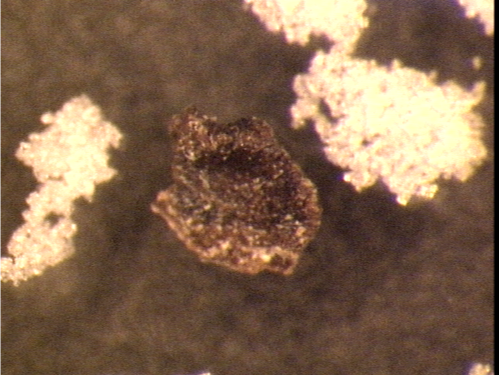Stereomicroscopy
The stereo microscope is the analyst’s first tool, enabling a quick examination of the sample to directly see what is happening or what the sample might be. “Unknown particles” are a common problem encountered in pharmaceutical development. Black specks, fibers, metallic flakes, glass, and polymer fragments are contaminants that sometimes find their way into a drug substance or drug product. They are easily recognizable with a stereo microscope and allow the scientist to quickly asses the most likely source, isolate the particle for further testing, and know which testing should be conducted. For example, a particle that is metallic or glass is likely an inorganic and should be tested with techniques suitable for the analysis of inorganics such as SEM/EDS. Fibers and non-metallic particles are likely organic and can be further characterized by infrared microspectroscopy and Raman microscopy. An examination using a stereo microscope can also provide important information about how the particle was generated, deposited, or incorporated with the product either during or after manufacturing.
Improved Pharma’s stereo microscopes are equipped with a variety of illumination sources including transmitted light, brightfield and darkfield coaxial, oblique, fiber optic, light emitting diode, or reflected polarized light for anisotropic materials, and high definition digital cameras for photomicrographs or short video to capture real-time motion pictures. Improved Pharma’s stereo microscopes include:
- Olympus, SZ 45
- Nikon, SMZ800 with Schott fiber optic illumination and HD digital imaging

